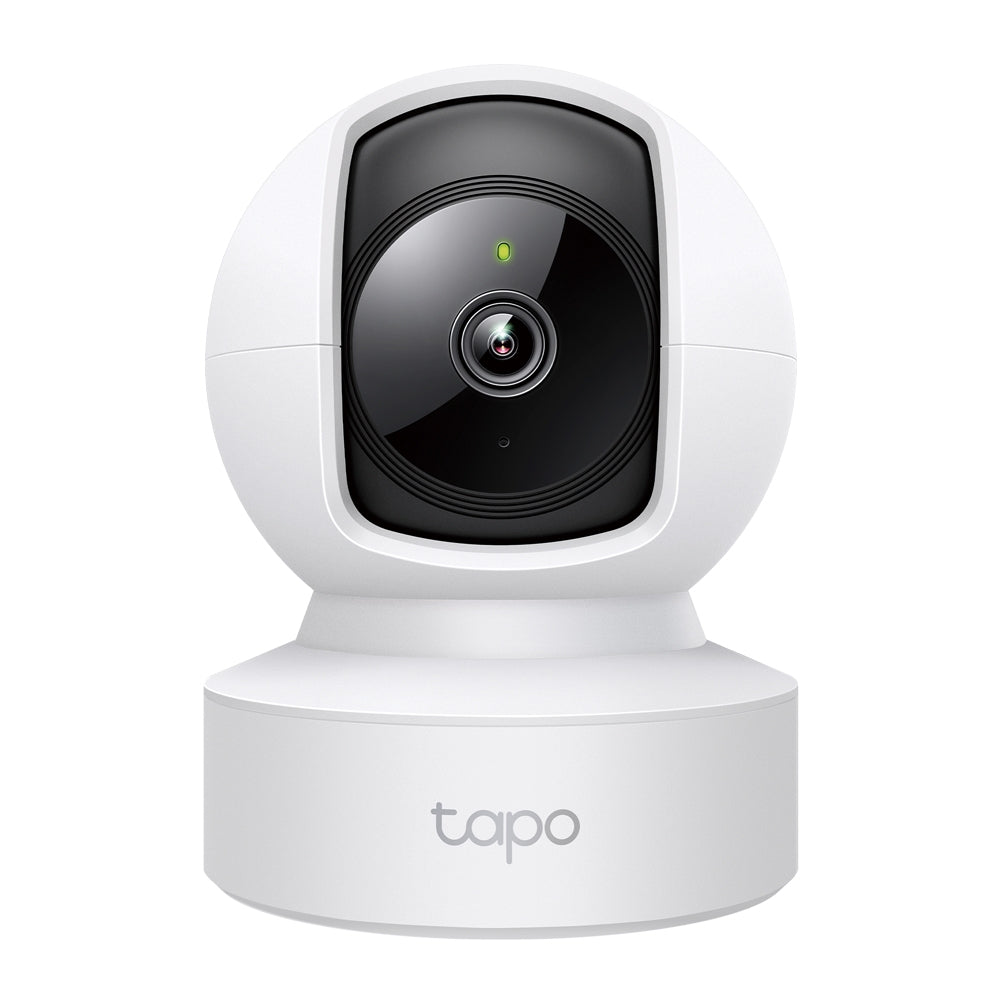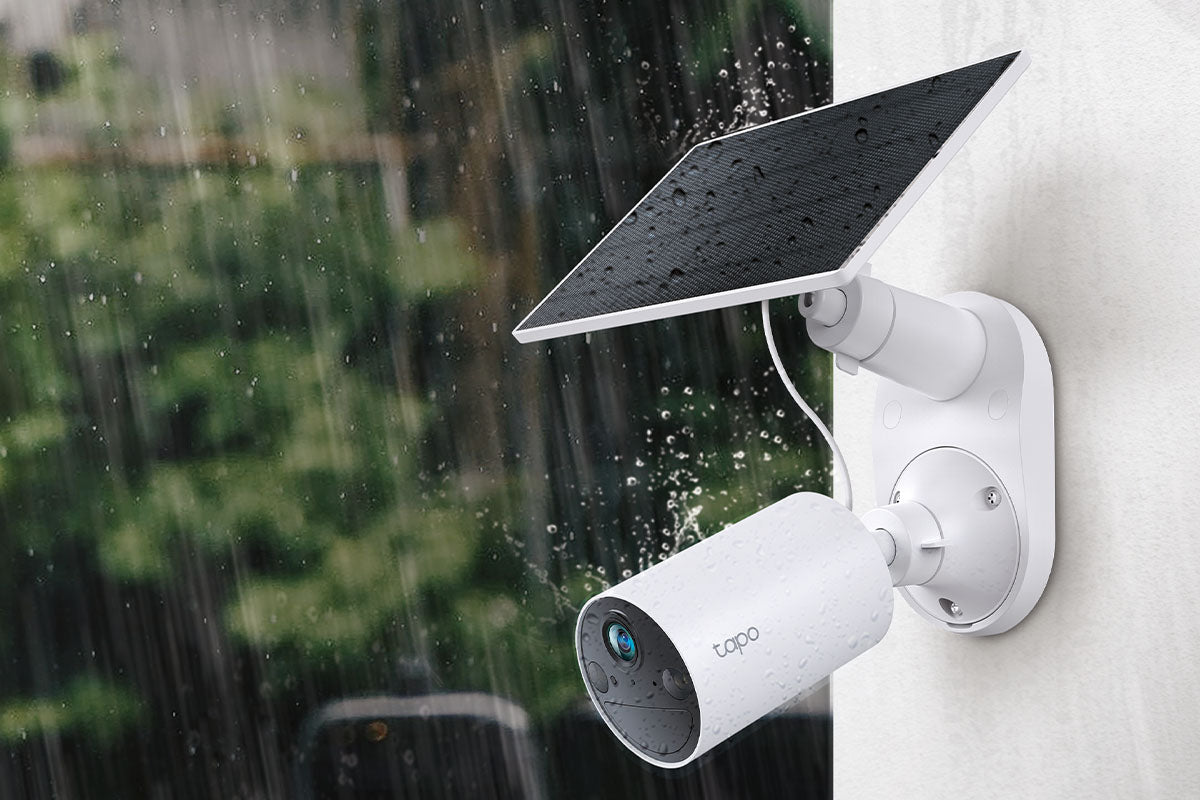Wi-Fi signal jamming might sound like something from a spy movie, but it’s a real-world threat that can put your home security at risk. Criminals can use a Wi-Fi jammer to disrupt your internet connection, taking security cameras offline and making it easier to break in undetected. It’s a growing concern for both homeowners and renters alike.
At Tapo, we want you to have complete peace of mind when it comes to your home’s protection. In this guide, we’ll explain exactly what Wi-Fi jamming is, how it works, and most importantly, how to prevent Wi-Fi jamming so your home and loved ones stay safe.
What is Wi-Fi jamming?
Wi-Fi jamming is when someone deliberately disrupts your wireless signal so your devices can’t communicate with your router. A Wi-Fi jammer works by sending out interference signals on the same frequency your Wi-Fi uses, causing a loss of connection.
Criminals might use this technique to disable smart home devices like security cameras or alarms during a burglary. By cutting off your devices from the internet, they can stop motion alerts, recording uploads, and live streaming to your phone.
In most countries, using a Wi-Fi jammer is illegal because it interferes with public communication systems. However, that doesn’t stop some people from trying. The risk is real, particularly for homes that rely solely on Wi-Fi-enabled security devices.
How do Wi-fi jammers work?
Wi-Fi jammers operate by flooding a particular frequency band with strong signals, most commonly 2.4GHz or 5GHz, which are the same frequencies used by Wi-Fi routers and devices. This interference overwhelms the connection, making it impossible for devices to send or receive data. For video doorbells and security cameras, this can mean they fail to detect motions and send notifications to your phone, lose their live feed, or stop video recording to the cloud. If you rely solely on Wi-Fi, a jammer can cut communication between your devices and your phone in seconds.
How to detect a Wi-Fi jammer

Unfortunately, you can’t directly see or hear a Wi-Fi jammer, but there are warning signs to watch for. You might notice sudden drops in signal quality even close to your router, or frequent network disconnections and reconnections. Internet speeds may slow dramatically, with reduced bandwidth, increased latency, or packet loss (when bits of data being sent across the network never reach their destination, causing lag or interruptions) during data transmission. In some cases, multiple devices lose connection at the same time or the problem occurs in short bursts before disappearing again. Routers or connected devices unexpectedly overheating can also be a sign. While these issues can sometimes be caused by normal network problems, repeated and sudden disruptions could point to interference from a jammer.
Are some devices more prone to Wi-Fi jamming than others?
Yes, some devices are more prone to Wi-Fi jamming than others. Devices that rely entirely on wireless connections, especially over the 2.4GHz band, tend to be more vulnerable.
- Wi-Fi routers act as the central hub for all wireless communications, making them a primary target. If a router’s signal is disrupted, every device on the network can lose connection.
- Wi-Fi security cameras are a common target because they’re usually the first line of defence for spotting intruders. Taking them offline can prevent footage from being streamed or alerts from being sent, giving criminals more time to act. This includes video doorbells, outdoor security cameras, and indoor security cameras.
- Smart home devices such as smart lights, speakers, plugs, and other IoT gadgets are heavily dependent on Wi-Fi. Many lack advanced interference detection or backup connections, so a jammer can easily take them offline.
- Smartphones and tablets can also be affected, losing Wi-Fi connectivity and experiencing increased battery drain. However, they may automatically switch to mobile data if available.
- Bluetooth devices such as wireless headphones, speakers, and wearables are not on Wi-Fi but can still be jammed by devices targeting similar frequencies, causing disconnections or malfunctions.
How to prevent Wi-Fi jamming
While no system is completely immune, there are practical ways to protect your network and reduce the risk.
Use encryption and authentication
Make sure your router uses advanced encryption protocols like WPA3. This makes it much harder for attackers to hijack your network. Also, set strong, unique passwords for both your Wi-Fi and your device apps.
Switch to 5GHz
Most Wi-Fi jammers target the 2.4GHz band as it’s more common. Using the 5GHz frequency can make your devices harder to jam, especially if you combine it with automatic band-switching. Tapo offers security cameras with 5GHz connections, such as Tapo C460 and Tapo C260.
Use local storage for Security Devices
All Tapo video doorbells and security cameras offer local storage options, meaning they can continue recording even if Wi-Fi is lost or unstable. Clips are safely saved on a microSD card, ensuring your home stays protected even during a network disruption. This is one of the easiest and most reliable ways to maintain security when wireless connections are interrupted.
Add directional or adaptive antenna
Directional antennas focus your Wi-Fi signal in a set direction, reducing the amount of interference from outside sources. Adaptive antennas can switch patterns automatically to avoid interference.
Install multiple access points or routers
Having more than one router or access point in different locations means your devices can connect to the strongest available signal. This makes it harder for a jammer to take out your entire network.
Choose wired connections
Where possible, use Ethernet cables for security devices. Wired connections are immune to Wi-Fi signal jamming and ensure continuous operation even if wireless signals are disrupted. Tapo models with Ethernet ports such as Tapo C560WS, Tapo C212, provide this extra reliability.
Invest in an anti-WiFi jammer
Some specialist devices can detect and block interference attempts. While no solution is 100% foolproof, an anti WiFi jamming device can add another layer of protection to your home security setup.
Conclusion
Wi-Fi jamming can be a real risk to smart home security, but by knowing how to prevent Wi-Fi jamming, you can protect your devices and keep your property safe. Using secure network settings, switching to the right frequency, and using local storage can make a big difference.
Tapo security devices are designed with advanced encryption and connectivity features, and all include local storage options, so recordings continue even when Wi-Fi is disrupted. By taking these extra precautions, you can prevent future interruptions and ensure your smart home works reliably when you need it most.
For more home protection tips, read our guides on how to prevent burglary and how to prevent package theft.














3 comments
Peter
Always good to know that someone got your back. Very useful information 👌
roger
very useful information
KennyM
Thank you for that sound advice. Having recently installed additional devices, this information is supportive to their purpose.
Leave a comment
All comments are moderated before being published.
This site is protected by hCaptcha and the hCaptcha Privacy Policy and Terms of Service apply.